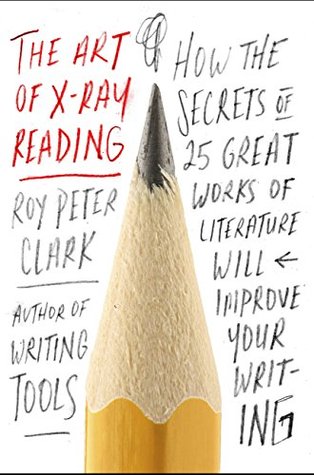The Art of X-Ray Reading by Roy Peter Clark
- Little, Brown and Company, 2016
- Kindle ed., 319 pages
- ISBN 978-0-3162-8217-8

I picked this book up because I interpreted the description to mean I’d get a refresher course in the kind of slow, close reading we spent our time on in grad school. Clark’s stated purpose is to help writers “learn their best moves” by observing how literary writers have used language to produce “the effects we experience from the page—effects such as clarity, suspense, humor, epiphany, and pain.” However, Clark’s discussion of literary technique is just as helpful to readers as it is to writers.
Clark achieves his purpose by analyzing works of authors including T.S. Eliot, Shakespeare, James Joyce, Flannery O’Connor, and Shirley Jackson. Using a technique he calls X-ray reading, he illustrates how writers build meaning in a literary work through “structural, or architectural, concerns—the ways in which the patterns of language and imagery create the backbone of a narrative.”
Clark’s basic belief is “every piece of writing needs a focus, a central theme or thesis, a point that all the evidence in that text will somehow support.” Reading this book will help you look closely at the how—from word choice to techniques such as defamiliarization, or “[making] the familiar strange”—the best writers accomplish this feat.
I also picked up this book because I’m interested in how writers of literary criticism approach the subject of discussing many different texts. Following his own belief that every piece of writing needs a focus, Clark advises finding an image or concept to use throughout such a discussion. In this book he carries his image of X-ray reading from beginning to end. I have to admit that this concept does unify the work, but it wasn’t long before I had trouble suppressing an eye roll every time he advised readers to put on their special X-ray reading glasses.
Despite this hokey image, I recommend this book to both readers and writers.
© 2023 by Mary Daniels Brown


I’d be interested to see similarities and differences with what I was taught about writing techniques for writing literary fiction.
I think I might have had enough of close reading from all the uni assignments